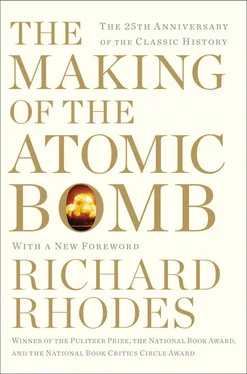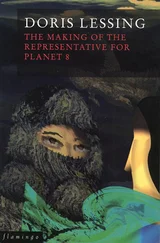He began engineering studies in Budapest at the King Joseph Institute of Technology, then was drafted into the Austro-Hungarian Army. Because he had a Gymnasium education he was sent directly to officers’ school to train for the cavalry. A leave of absence almost certainly saved his life. He asked for leave ostensibly to give his parents moral support while his brother had a serious operation. 15In fact, he was ill. He thought he had pneumonia. He wanted to be treated in Budapest, near his parents, rather than in a frontier Army hospital. He waited standing at attention for his commanding officer to appear to hear his request while his fever burned at 102 degrees. The captain was reluctant; Szilard characteristically insisted on his leave and got it, found friends to support him to the train, arrived in Vienna with a lower temperature but a bad cough and reached Budapest and a decent hospital. His illness was diagnosed as Spanish influenza, one of the first cases on the Austro-Hungarian side. The war was winding down. Using “family connections” he arranged some weeks later to be mustered out. 16“Not long afterward, I heard that my own regiment,” sent to the front, “had been under severe attack and that all of my comrades had disappeared.” 17
In the summer of 1919, when Lenin’s Hungarian protégé Bela Kun and his Communist and Social Democratic followers established a shortlived Soviet republic in Hungary in the disordered aftermath of Austro-Hungarian defeat, Szilard decided it was time to study abroad. He was twenty-one years old. Just as he arranged for a passport, at the beginning of August, the Kun regime collapsed; he managed another passport from the right-wing regime of Admiral Nicholas Horthy that succeeded it and left Hungary around Christmastime. 18
Still reluctantly committed to engineering, Szilard enrolled in the Technische Hochschule, the technology institute, in Berlin. But what had seemed necessary in Hungary seemed merely practical in Germany. The physics faculty of the University of Berlin included Nobel laureates Albert Einstein, Max Planck and Max von Laue, theoreticians of the first rank. Fritz Haber, whose method for fixing nitrogen from the air to make nitrates for gunpowder saved Germany from early defeat in the Great War, was only one among many chemists and physicists of distinction at the several government- and industry-sponsored Kaiser Wilhelm Institutes in the elegant Berlin suburb of Dahlem. The difference in scientific opportunity between Budapest and Berlin left Szilard physically unable to listen to engineering lectures. “In the end, as always, the subconscious proved stronger than the conscious and made it impossible for me to make any progress in my studies of engineering. Finally the ego gave in, and I left the Technische Hochschule to complete my studies at the University, some time around the middle of ‘21.” 19
Physics students at that time wandered Europe in search of exceptional masters much as their forebears in scholarship and craft had done since medieval days. Universities in Germany were institutions of the state; a professor was a salaried civil servant who also collected fees directly from his students for the courses he chose to give (a Privatdozent , by contrast, was a visiting scholar with teaching privileges who received no salary but might collect fees). If someone whose specialty you wished to learn taught at Munich, you went to Munich; if at Göttingen, you went to Göttingen. Science grew out of the craft tradition in any case; in the first third of the twentieth century it retained—and to some extent still retains—an informal system of mastery and apprenticeship over which was laid the more recent system of the European graduate school. This informal collegiality partly explains the feeling among scientists of Szilard’s generation of membership in an exclusive group, almost a guild, of international scope and values.
Szilard’s good friend and fellow Hungarian, the theoretical physicist Eugene Wigner, who was studying chemical engineering at the Technische Hochschule at the time of Szilard’s conversion, watched him take the University of Berlin by storm. “As soon as it became clear to Szilard that physics was his real interest, he introduced himself, with characteristic directness, to Albert Einstein.” Einstein was a man who lived apart—preferring originality to repetition, he taught few courses—but Wigner remembers that Szilard convinced him to give them a seminar on statistical mechanics. 20, 21Max Planck was a gaunt, bald elder statesman whose study of radiation emitted by a uniformly heated surface (such as the interior of a kiln) had led him to discover a universal constant of nature. He followed the canny tradition among leading scientists of accepting only the most promising students for tutelage; Szilard won his attention. Max von Laue, the handsome director of the university’s Institute for Theoretical Physics, who founded the science of X-ray crystallography and created a popular sensation by thus making the atomic lattices of crystals visible for the first time, accepted Szilard into his brilliant course in relativity theory and eventually sponsored his Ph. 22D. dissertation. 23
The postwar German infection of despair, cynicism and rage at defeat ran a course close to febrile hallucination in Berlin. The university, centrally located between Dorotheenstrasse and Unter den Linden due east of the Brandenburg Gate, was well positioned to observe the bizarre effects. Szilard missed the November 1918 revolution that began among mutinous sailors at Kiel, quickly spread to Berlin and led to the retreat of the Kaiser to Holland, to armistice and eventually to the founding, after bloody riots, of the insecure Weimar Republic. By the time he arrived in Berlin at the end of 1919 more than eight months of martial law had been lifted, leaving a city at first starving and bleak but soon restored to intoxicating life.
“There was snow on the ground,” an Englishman recalls of his first look at postwar Berlin in the middle of the night, “and the blend of snow, neon and huge hulking buildings was unearthly. You felt you had arrived somewhere totally strange.” To a German involved in the Berlin theater of the 1920s “the air was always bright, as if it were peppered, like New York late in autumn: you needed little sleep and never seemed tired. 24Nowhere else did you fail in such good form, nowhere else could you be knocked on the chin time and again without being counted out.” The German aristocracy retreated from view, and intellectuals, film stars and journalists took its place; the major annual social event in the city where an imperial palace stood empty was the Press Ball, sponsored by the Berlin Press Club, which drew as many as six thousand guests. 25, 26
Ludwig Mies van der Rohe designed his first glass-walled skyscraper in postwar Berlin. 27Yehudi Menuhin made his precocious debut, with Einstein in the audience to applaud him. 28George Grosz sorted among his years of savage observation on Berlin’s wide boulevards and published Ecce Homo. 29 Vladimir Nabokov was there, observing “an elderly, rosy-faced beggar woman with legs cut off at the pelvis… set down like a bust at the foot of a wall and… selling paradoxical shoelaces.” Fyodor Vinberg, one of the Czar’s departed officers, was there, publishing a shoddy newspaper, promoting The Protocols of the Elders of Zion , which he had personally introduced into Germany from Russia—a new German edition of that pseudo-Machiavellian, patently fraudulent fantasy of world conquest sold more than 100,000 copies—and openly advocating the violent destruction of the Jews. 30, 31Hitler was not there until the end, because he was barred from northern Germany after his release from prison in 1924, but he sent rumpelstiltskin Joseph Goebbels to stand in for him; Goebbels learned to break heads and spin propaganda in an open, lusty, jazz-drunk city he slandered in his diary as “a dark and mysterious enigma.” 32
Читать дальше












